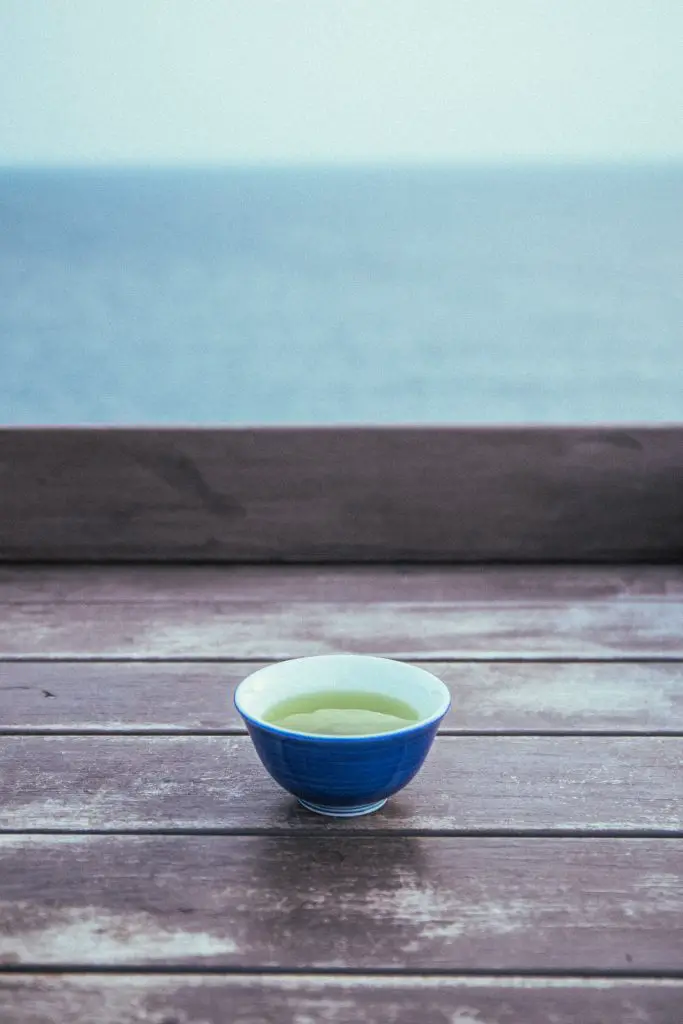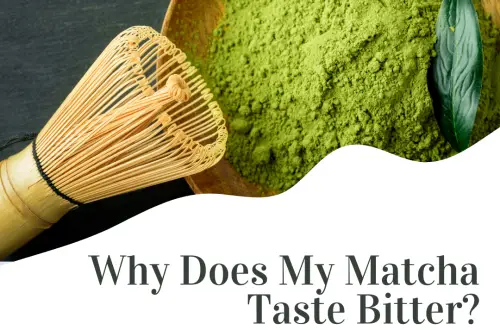Matcha and Sencha are two prominent varieties of Japanese green tea with distinct differences. While both come from the Camellia sinensis plant and share certain health benefits, their cultivation, processing, and preparation methods set them apart. Matcha is a fine, jade-colored powder known for its role in the traditional Japanese tea ceremony, while Sencha is the most commonly drunk green tea in Japan, appreciated for its delicate balance of sweet and bitter flavors.
Understanding these differences is essential for tea enthusiasts looking to explore the depths of Japanese tea culture. Knowing the characteristics of Matcha and Sencha can guide you in choosing a tea that fits your taste preferences and suits your lifestyle. Each type of tea offers a unique experience, from the intense, almost creamy flavor of Matcha to the refreshing, grassy notes of Sencha.
Quick Navigation
Key Takeaways
- Matcha is a finely ground powder with a rich, creamy taste, while Sencha consists of whole leaves with a more subtle flavor.
- Drinking either tea delivers health benefits, but preparation and brewing techniques vary significantly between the two.
- Both teas have culinary uses and play vital roles in the cultural tea practices of Japan.

Photo by Luka Sue
Overview of Matcha and Sencha
When you explore Japanese green teas, particularly Matcha and Sencha, you will discover two distinct traditions and flavors cherished around the world. Both teas offer a unique experience, rooted in intricate cultivation and preparation techniques.
Origins and History
Matcha originates from Japan, where it has been an integral part of ceremonies and daily life for centuries. It is known for its vibrant green color and is traditionally used in Japanese tea ceremonies. Matcha’s history extends to the time of Zen monks, who appreciated the tea for its calming and meditative properties.
Sencha, also from Japan, is the most commonly drunk green tea in the country. It has a history that is less ceremonial and more everyday but is no less rich. Sencha became popular in the 18th century and is prized for its refreshing flavor and versatility.
Processing Methods
The processing of Matcha involves shading the tea plants for about 20 to 30 days before harvest. This increases the chlorophyll levels, giving the tea a deeper green hue and enhancing its flavor. The leaves are then stone-ground into a fine powder which you mix directly with water to drink.
Conversely, Sencha leaves are not shaded before harvest. After picking, the leaves are steamed to stop fermentation, then rolled, shaped, and dried. This results in a more conventional loose-leaf tea that is steeped in water.
By understanding these two teas’ distinct backgrounds and processing methods, you can better appreciate their unique characters.
Physical Characteristics
Matcha and Sencha green teas, while both hailed from Japan, exhibit distinct physical characteristics. The key differences that you can observe are in their appearance and texture.
Appearance
Matcha powder presents a vibrant green color and is fine in consistency. This is because the leaves are shade-grown and then ground into a delicate powder. When you look at Sencha, in contrast, it appears as whole, rolled leaves that are a lighter green.
Texture
The texture of matcha is smooth and has a talc-like quality due to its powdered form. In contrast, Sencha leaves are coarse to the touch and are often steamed and rolled, which preserves the leaf structure.
Taste Profiles
In exploring the taste of Matcha and Sencha green teas, you’ll encounter striking differences in their flavor components and aroma, reflecting their unique production processes.
Flavor Components
Matcha is known for its rich, umami taste which often carries a sweet undertone and a creamy texture. Due to the shading of the tea bushes before harvest, Matcha becomes rich in theanine—an amino acid responsible for its distinctive full-bodied flavor. On the other hand, Sencha, which is not shaded before harvest, typically presents a more balanced profile with a mixture of sweetness, bitterness, and a fresh grassy note. Its flavors are often described as clean and complex, with a sharp finish that can vary from astringent to vegetal, depending on the quality and brewing method.
Aroma
When it comes to aroma, Matcha exudes a profound, earthy bouquet, one that is often compared to fresh grass or spinach with a slight sweetness echoing through. The process of grinding the leaves into a fine powder means that you experience the aroma intensely as you consume the tea. Sencha, conversely, has a more diverse range of fragrances, displaying a spectrum from floral to seaweed-like smell. The intact leaves release their scent subtlety during steeping, providing a more delicate olfactory experience.
Health Benefits and Nutrients
When exploring Matcha and Sencha green teas, your health and nutrient intake are at the forefront. Both are renowned for their beneficial properties, yet they possess distinct nutritional profiles.
Antioxidant Content
Matcha is exceptional for its high antioxidant content, particularly epigallocatechin gallate (EGCG), known for its cancer-fighting properties. You consume whole leaves in a powdered form, which means you ingest more nutrients than with other teas like Sencha. Sencha, however, still provides ample antioxidants, just in lesser quantities compared to Matcha.
Caffeine Levels
Your caffeine intake differs between the two. Matcha contains a higher caffeine concentration, roughly equivalent to half the amount found in a cup of coffee, which makes it a potent energy booster. Conversely, Sencha has less caffeine, which results in a milder energy lift, and can be suitable for a gentle increase in alertness without the jitters coffee might cause.
Preparation and Brewing Techniques
Understanding the distinct preparation and brewing techniques for matcha and sencha can significantly enhance your green tea experience, ensuring you capture the full flavor and benefits of each type.
Matcha Preparation
To prepare matcha, you’ll need a fine powder created from shade-grown tea leaves, which gives it a vibrant green color and a unique nutrient profile. Begin by sifting 1-2 teaspoons of matcha powder into a bowl to remove clumps. Heat water to just below boiling (about 80°C or 175°F) and add a small amount to the bowl, just enough to form a paste with the powder. Then, pour in about 60-80ml of hot water. Using a bamboo whisk, rapidly whisk the matcha in an “M” pattern until a frothy layer forms on the surface. For a proper ceremonial touch, whisk until the froth is thick and even, with tiny bubbles.
Sencha Brewing
Brewing sencha requires a delicate touch, as its whole leaves are more susceptible to bitterness if overbrewed. First, measure approximately one teaspoon of sencha leaves per cup. Heat water to 70-80°C (158-176°F). Pour the hot water over the leaves and let it steep for 1 to 2 minutes, depending on how strong you like your tea. Pour through a strainer to serve, ensuring all the water is removed from the leaves to avoid further steeping which can result in bitterness.
By paying attention to these preparation and brewing specifics, you’ll be able to enjoy the distinct and traditional flavors of both matcha and sencha green tea.
Culinary Uses
When incorporating Matcha and Sencha into your culinary endeavors, your approach will differ due to their distinct physical forms and flavor profiles.
Matcha, ground into a fine powder, affords versatility. You can seamlessly integrate it into a variety of recipes:
- Baked goods such as cakes and cookies for a subtle green hue and earthy taste.
- Smoothies for an antioxidant boost.
- Lattes, by whisking the powder with hot water before adding milk.
- Dressings or marinades to impart a touch of uniqueness to your dishes.
Alternatively, Sencha, typically available in loose leaf form, is less commonly used for cooking but notable for brewing:
- A refreshing cup of tea, either hot or iced, with a delicate balance of sweetness and bitterness.
- Broths and soups, where leaves infuse a nuanced flavor.
- Various desserts, like ice cream or panna cotta, where steeped leaves can offer a subtle aroma.
Table: Examples of Matcha and Sencha Use in Foods and Beverages
| Matcha | Sencha |
|---|---|
| Matcha-infused brownies | Sencha tea ice cream |
| Green tea smoothies | Sencha-steeped chicken broth |
| Creamy matcha lattes | Cold-brewed Sencha for a light beverage |
Remember to sift matcha before use to avoid clumps, and infuse Sencha leaves at the correct temperature for the best flavor extraction. Your creativity is the limit when it comes to harnessing the unique qualities of these two Japanese green teas in your culinary repertoire.
Buying Guide
When selecting Matcha or Sencha green tea, it’s crucial to understand the nuances that contribute to their quality. Factors such as appearance, texture, and storage practices will greatly influence your tea experience.
Quality Indicators
Matcha:
- Color: Look for a vibrant, bright green color, which indicates a high level of chlorophyll and a good quality Matcha.
- Texture: A fine, powdery texture that feels silky when rubbed between your fingers suggests a finely ground Matcha.
Sencha:
- Leaf Quality: Choose Sencha with small, tightly rolled leaves. The leaves should appear uniform and intact without too much powder or broken pieces.
- Aroma: Fresh, grassy aromas are characteristic of high-quality Sencha. Avoid teas with a dull or overly astringent smell.
Storage Recommendations
Matcha and Sencha:
- Temperature: Store your tea in a cool, dark place away from direct sunlight and heat to preserve freshness.
- Air Exposure: Keep tea in an airtight container to prevent oxidation, which can diminish flavor and color.
- Moisture: Ensure your storage area is dry; moisture can lead to mold and degradation of the tea leaves.
Cultural Significance
In Japan, tea is not merely a beverage; it’s an integral part of the culture, steeped in tradition. Specifically, Matcha and Sencha represent distinct aspects of Japanese tea ceremonies and social customs.
- Matcha
Often associated with the traditional Japanese tea ceremony, chanoyu, matcha has a ceremonial prestige. You would find that the preparation of matcha is a ritualistic art, involving a bamboo whisk and a meticulous process to create a frothy, vibrant green tea. - Sencha Sencha is more commonly consumed in daily Japanese life. It plays a vital role in hospitality and social situations. Offering sencha to your guests is a common courtesy and a sign of welcome in both casual and formal settings.
Both teas are celebrated during different seasonal events, reflecting the appreciation of the moment and the changing times of year. The first harvest of sencha, for example, occurs in the spring and is highly prized, while the enjoyment of matcha might be emphasized on special occasions, drawing attention to the transient beauty of the present.
In your encounter with these teas, you’re not just tasting a drink; you’re partaking in a legacy that has shaped social norms and artistic practices for centuries. Each sip is a taste of history and a tribute to the craftsmanship of Japanese tea producers.
| TYPE OF TEA | MATCHA | SENCHA |
| Processing | Stone-ground leaves | Steamed and rolled leaves |
| Taste | Rich, vegetal, slightly sweet | Fresh, grassy, slightly bitter |
| Color | Vibrant green | Bright green |
| Caffeine Content | High | Moderate |
| Health Benefits | High in antioxidants, boosts metabolism | Rich in antioxidants, promotes heart health |

Scott is the founder of TeaMinded. He enjoys tasting and discovering teas from across the globe, with green teas and ceremonial matcha from Japan being among his favorites. He’s grateful to be immersed in the tea community, always learning and sharing along the journey.






